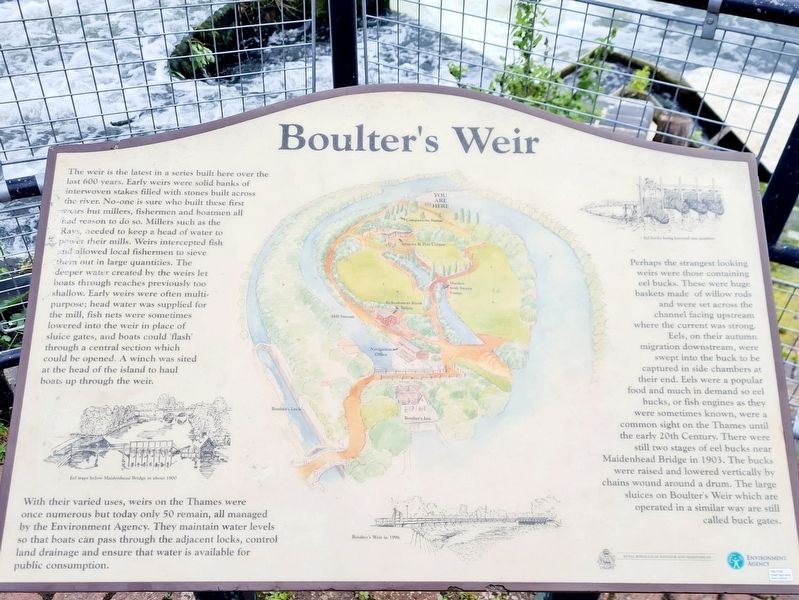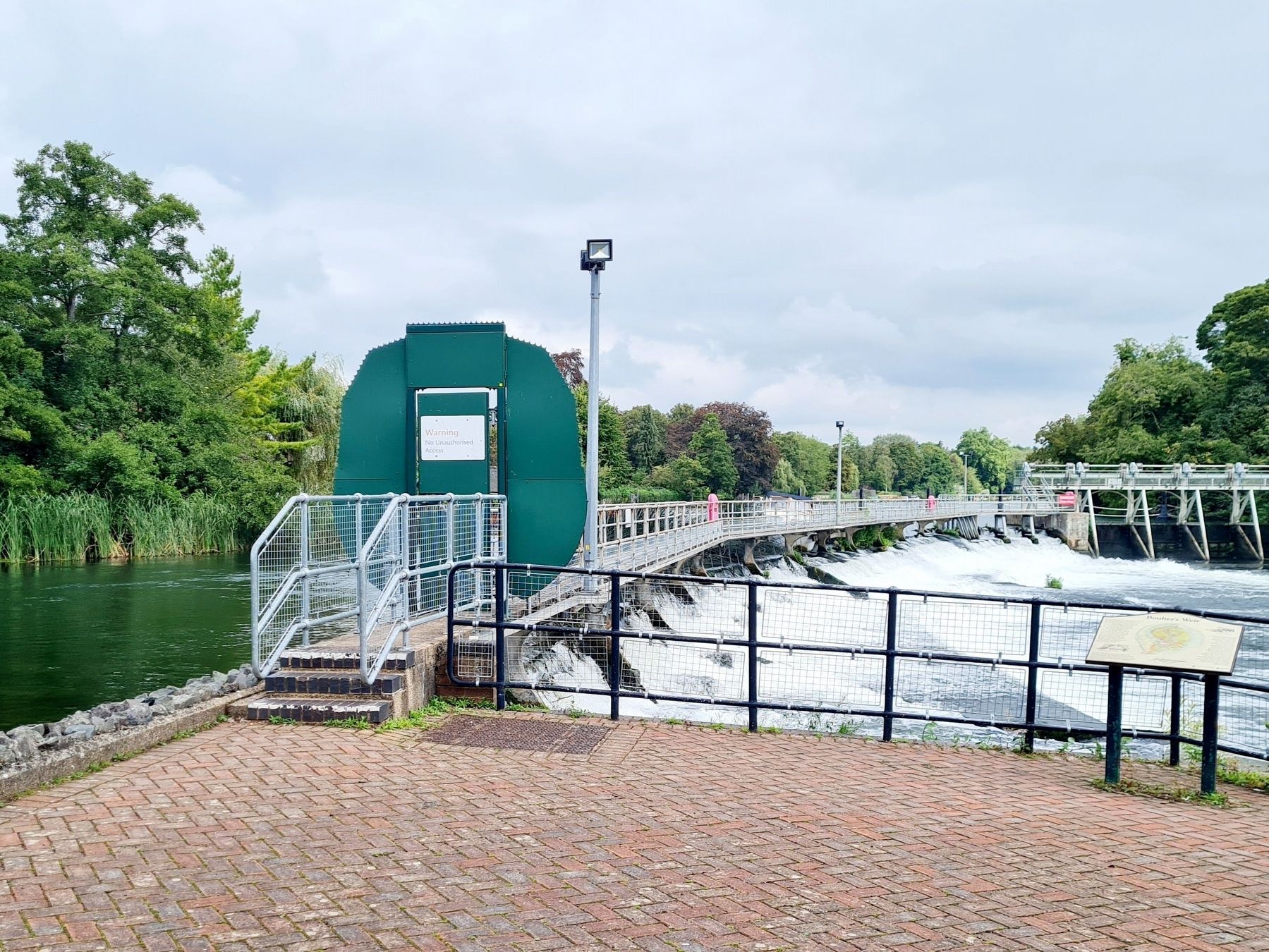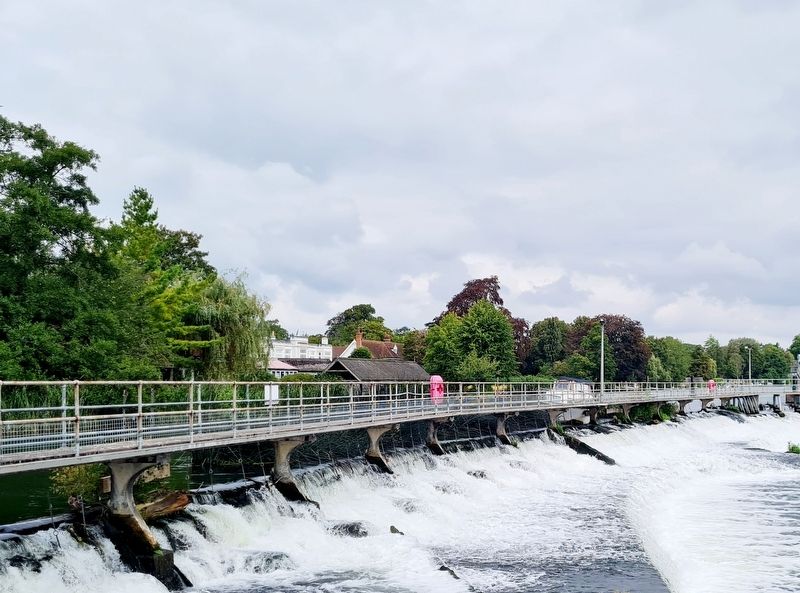Maidenhead in Berkshire, England, United Kingdom — Northwestern Europe (the British Isles)
Boulter's Weir
The weir is the latest in a series built here over the last 600 years. Early weirs were solid banks of interwoven stakes filled with stones built across the river. No-one is sure who built these first weirs but millers, fishermen and boatmen all had reason to do so. Millers such as the Rays, needed to keep a head of water to power their mills. Weirs intercepted fish and allowed local fishermen to sieve them out in large quantities. The deeper water created by the weirs let boats through reaches previously too shallow. Early weirs were often multi- purpose; head water was supplied for the mill, fish nets were sometimes lowered into the weir in place of sluice gates, and boats could 'flash' through a central section which could be opened. A winch was sited at the head of the island to haul boats up through the weir.
With their varied uses, weirs on the Thames were once numerous but today only 50 remain, all managed by the Environment Agency. They maintain water levels so that boats can pass through the adjacent locks, control land drainage and ensure that water is available for public consumption.
Perhaps the strangest looking weirs were those containing eel bucks. These were huge baskets made of willow rods and were set across the channel facing upstream where the current was strong. Eels, on their autumn migration downstream, were swept into the buck to be captured in side chambers at their end. Eels were a popular food and much in demand so eel bucks, or fish engines as they were sometimes known, were a common sight on the Thames until the early 20th Century. There were still two stages of eel bucks near Maidenhead Bridge in 1903. The bucks were raised and lowered vertically by chains wound around a drum. The large sluices on Boulter's Weir which are operated in a similar way are still called buck gates.
Erected by Royal Borough of Windsor and Maidenhead, Environment Agency.
Topics. This historical marker is listed in these topic lists: Man-Made Features • Waterways & Vessels.
Location. 51° 32.147′ N, 0° 41.915′ W. Marker is in Maidenhead, England, in Berkshire. Marker can be reached from Ray Mill Island. Marker is at the northern most point of Ray Mill Island. Touch for map. Marker is at or near this postal address: Ray Mill Island, Maidenhead, England SL6 8JT, United Kingdom. Touch for directions.
Other nearby markers. At least 8 other markers are within 3 kilometers of this marker, measured as the crow flies. Welcome to Ray Mill Island (approx. 0.2 kilometers away); Maidenhead Boundary Walk (approx. 0.3 kilometers away); Richard Dimbleby CBE (approx. 0.3 kilometers away); Welcome to Bridge Gardens (approx. 1.3 kilometers away); Maidenhead Bridge (approx. 1.3 kilometers away); Maidenhead Floods 1947 (approx. 1.4 kilometers away); The Sounding Arch (1838) (approx. 1.6 kilometers away); Prize Pig (approx. 1.9 kilometers away). Touch for a list and map of all markers in Maidenhead.
Credits. This page was last revised on September 3, 2023. It was originally submitted on September 2, 2023, by Stephen Palmer of Ascot, England. This page has been viewed 62 times since then and 12 times this year. Photos: 1, 2, 3. submitted on September 2, 2023, by Stephen Palmer of Ascot, England. • Andrew Ruppenstein was the editor who published this page.


